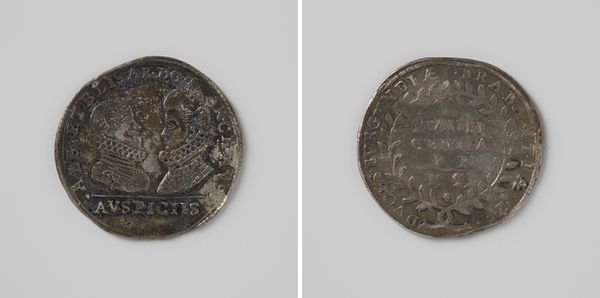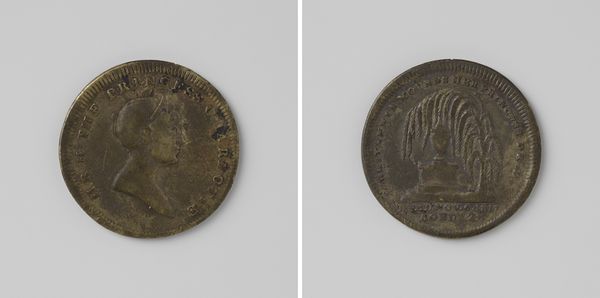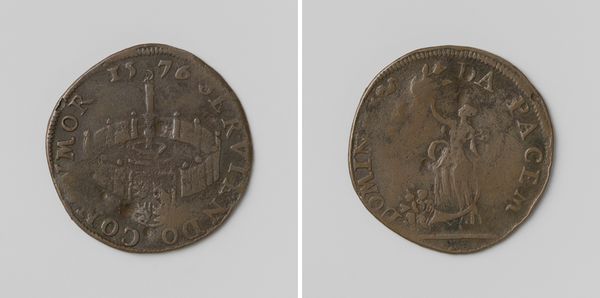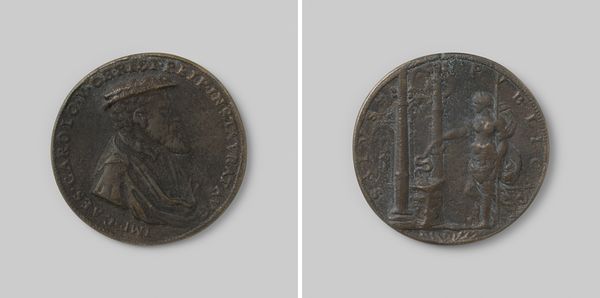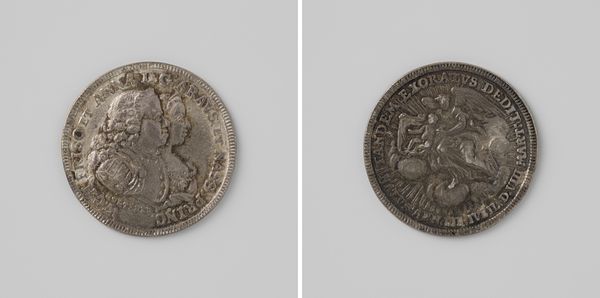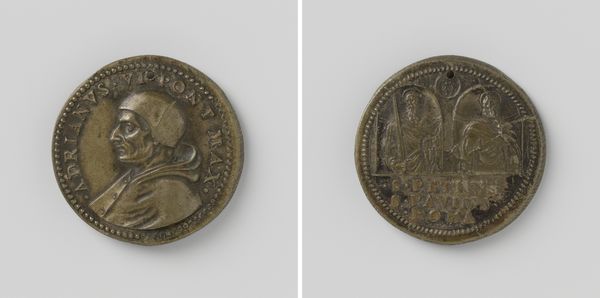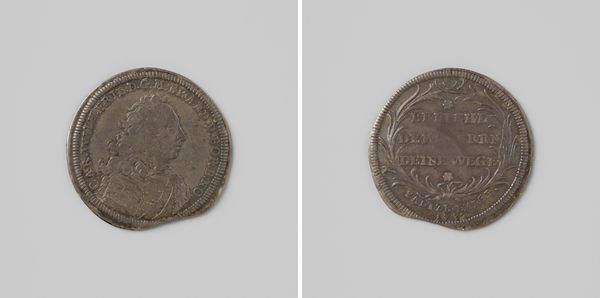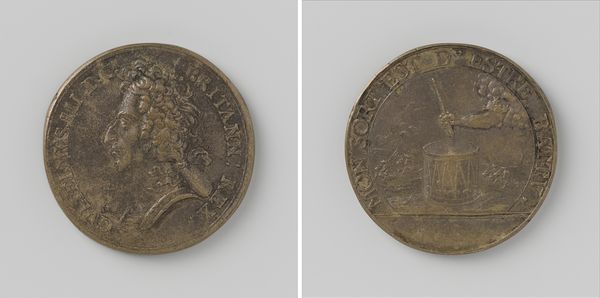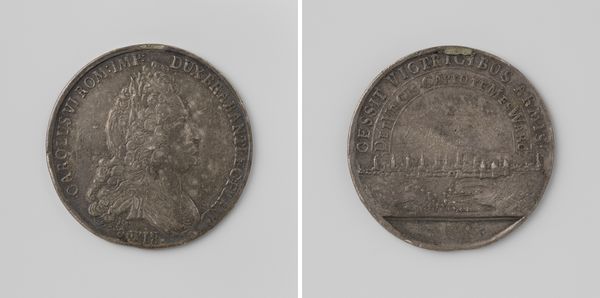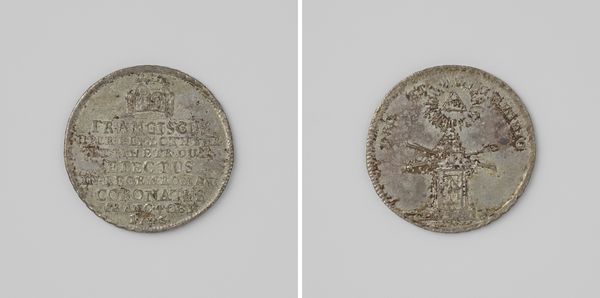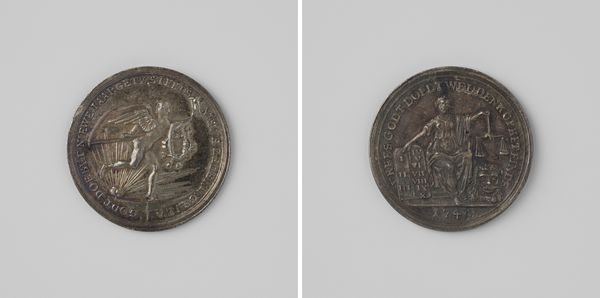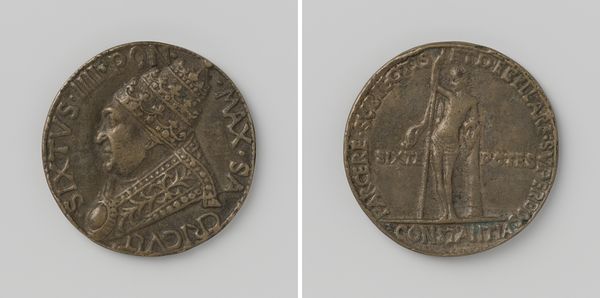
Maria Elisabeth van Oostenrijk, sinds zes jaar landvoogdes der zuidelijke Nederlanden 1731
0:00
0:00
metal, sculpture, engraving
#
portrait
#
baroque
#
metal
#
sculpture
#
history-painting
#
engraving
Dimensions: diameter 3.2 cm, weight 10.26 gr
Copyright: Rijks Museum: Open Domain
Curator: Here we have an engraved metal piece by Philippe Roëttiers, dating to 1731. The text indicates it represents Maria Elisabeth of Austria in her sixth year as Governor of the Southern Netherlands. What are your first thoughts? Editor: I’m immediately drawn to the formality of it, the way the inscription frames the image. It's also interesting how a woman ruler is memorialized, almost like a classical Roman coin portraying an emperor. Curator: That's an excellent point. Memorializing rulers via coinage and medals had a long tradition in European courts. These medallions weren’t currency but rather commemorative objects, functioning to broadcast power and legitimize authority. Consider where these objects circulated: among elites, at court, at formal ceremonies. Editor: So it’s not just a portrait, it’s also about the symbolic weight of female leadership in that specific moment in time. How was Maria Elisabeth perceived? Did her reign represent a progressive era or was she largely a figurehead? Curator: Historians see her governance as relatively stable and prosperous. She maintained a balance between Austrian interests and local concerns. She had a deep appreciation for the arts and sciences, and was viewed by some as something of an enlightened leader. That is certainly the picture promoted here. Editor: It’s fascinating how these small-scale objects functioned as propaganda. I’m thinking about the symbols on the reverse: the lion, the crest… those were deliberately chosen to convey strength and stability. And it seems meant to link her to both local tradition and Austrian imperial power. Curator: Absolutely. Every detail here would be laden with significance. Roëttiers, as a court artist, was highly attuned to these symbolic languages. The selection and arrangement weren't arbitrary, reflecting her agenda and position within the Austrian dynasty. Editor: I am thinking of the relatively limited ways women in power have been depicted throughout history and the constraints placed on them as political actors. These sorts of portrait medals must have played an important role in constructing perceptions and affirming power structures. Curator: Exactly. These medals offer us valuable insights into the way power was visualized and disseminated. By considering that context, this seemingly simple portrait reveals intricate layers of historical meaning. Editor: Indeed, thinking about how gender, power, and visual culture intersect offers fresh insight on artifacts like this medallion. It’s a powerful reminder that even the smallest object can carry weighty narratives about history and politics.
Comments
No comments
Be the first to comment and join the conversation on the ultimate creative platform.

